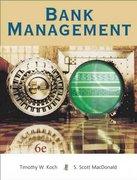Question
Human Development Index rank Per capita income (GNI per capita) Population who earn below $2.00 per day GDP Health (% expenditure of GDP) Adult literacy





Human Development Index rank
Per capita income (GNI per capita)
Population who earn below $2.00 per day
GDP
Health (% expenditure of GDP)
Adult literacy rate
Birth rate
Death rate
Infant Mortality rate
Maternal Mortality rate/100,000
Life expectancy at birth
Education (expected years of schooling)
Share of seats in parliament (% of women)
Employment (Unemployment rate - % 15+)
Child Labour (% ages 5-14)
Human Security (Prison population rate per 100,000)
Homicide rate per 100,000
Mobility and communication (Internet users %)
Demography (urban % of population).
The following resources will help you as you complete the task:
Organize your comparison statistics in a table, and determine the conclusions you can draw from analyzing the statistics. What can you observe about the differences between the three countries you compared?
Be sure to say why you think these differences exist. Explain one positive and one negative effect on potential business that could result from these differences.
Explore how economic incentives shape the process of research and development. It will touch upon such topics as economic nature of ideas (e.g. are they rival and/or excludable?), provision of public goods, government's role in the market economy and economic efficiency of competitive and monopoly markets.
Questions
Q1. [20 marks] Let's look at a COVID-19 vaccine from the economics point of view. There are two ways to think about what the term "vaccine" represents. They are:
(a) A vaccine formula or a method of producing a given vaccine. At this level, a vaccine is just an idea, a recipe that anyone with a proper equipment can use to produce a vaccine product.
(b) An actual vaccine dose in a physical form (e.g. in a vial) that was manufactured by a company. Discuss the rivalry and excludability of these two versions of a good, (a) and (b), and classify them into one of the 4 categories of goods discussed in Lecture 5. Do you think a competitive market will produce an efficient quantity of good (a)? What about good (b)? Carefully explain your reasoning. If one of the goods cannot be produced by a competitive market, what are the possible solutions to this problem?
Q2. [30 marks] Consider the following simple model. Suppose that the research and development cost of a new vaccine is equal to $15. A company X is considering investing in developing this vaccine.
The demand for the final product is given by P=10-Q, where P is the price of one vaccine dose and Q is the quantity demanded. The marginal cost of producing one dose of vaccine is constant (i.e. it does not depend on the output level) and is equal to $2. Let's assume for simplicity that the vaccine production process does not involve any fixed cost. This implies that the average total cost is also constant and equal to $2.
(a) Suppose that after developing a vaccine, company X can apply for patent which will prevent other firms from manufacturing and selling this product. Effectively, company X becomes the monopolist producer of the vaccine it has developed.
What price will it charge for a vaccine dose? How many doses of vaccine will it produce? Hint: the marginal revenue curve of a monopolist in this market is MR=10-2Q.
How much profit will it make? Given these outcomes, does it have an incentive to develop this vaccine in the first place?
Demonstrate your answer on a GRAPH, carefully labelling all relevant variables and concepts.
Overall do you think the patent is a good way to incentivise the development of a vaccine? Can you think of any possible drawbacks of this arrangement?
(b) Suppose that after company X develops a vaccine, other companies can freely use this idea to enter the market and produce and sell this vaccine. What will be the resulting market structure? What will be the equilibrium price and quantity? How much profit will each firm make? Does company X has an incentive to develop the vaccine in the first place?
Demonstrate your answer on a GRAPH, carefully labelling all relevant variables and concepts.
Overall, do you think allowing imitation is a good way to incentivise the development of a vaccine? What are the possible drawbacks of this arrangement?
Q3. [40 marks] Some of the companies that have developed successful vaccines (e.g. Pfizer) have indicated that they have no intention of renouncing the patent protecting giving them the exclusive right to produce the vaccine. Let's look at some of the ideas that have been proposed to deal with the problems that this presents.
(a) Some commentators have proposed a suspension of the intellectual property rights for COVID-19 vaccines. (see for example [1]);
(b) Others have proposed mandatory licensing (see for example [2]);
(c) Some older ideas include such mechanisms as patent buyouts ([3]).
Describe each of these proposals. Compare their benefits and drawbacks. Carefully, outline your arguments for and against each method. How does each of them solve the problem created by a vaccine patent? What new problems do they create (if any)? Overall, which of the three is likely to provide the greatest benefit for society in the long run? Explain your answer in detail. Hint: Stay on topic and remember that this is an economics essay. How does your answer address one of the main ideas of economics: Incentives Matter!





Step by Step Solution
There are 3 Steps involved in it
Step: 1

Get Instant Access to Expert-Tailored Solutions
See step-by-step solutions with expert insights and AI powered tools for academic success
Step: 2

Step: 3

Ace Your Homework with AI
Get the answers you need in no time with our AI-driven, step-by-step assistance
Get Started


